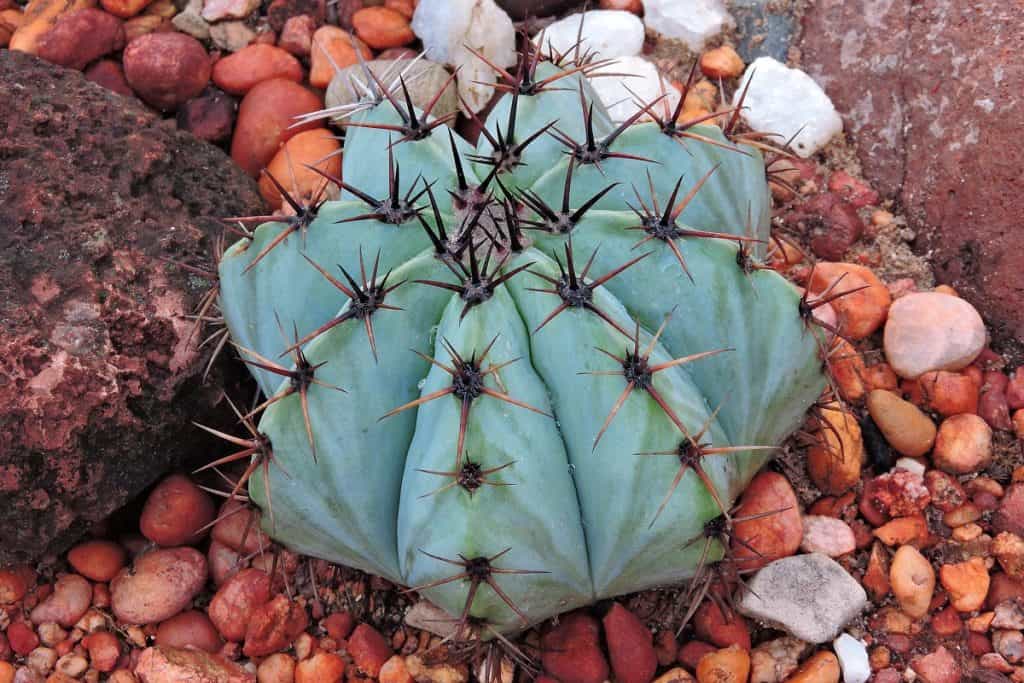Melocactus glaucescens: Characteristics and Care
Have you ever come across a cactus that looks like it’s wearing a funky hat? Well, let me introduce you to the Melocactus glaucescens, a rare and quirky cactus native to Brazil that will make you do a double-take! With its spiky stems topped by a wooly crown in shades of white, yellow, and orange, this cactus is a true showstopper. And wait until you see its beautiful purple-pink flowers bloom – it’s a sight to behold! Trust me; you’ll want to add this eye-catching plant to your collection.

Contents
About Melocactus glaucescens
Typically growing as a single stem with just a few ridges and spines, the Melocactus glaucescens is a unique cactus species. The real star of the show is the cephalium, or the woolly crown, that sprouts from the top of the stem. This fuzzy headpiece comes alive with bristles in vibrant hues that are sure to grab your attention. And when the cactus decides to flaunt its blooms, get ready for a pop of color as the purple-pink flowers emerge from the cephalium before developing into dark fruits.
Related Post:
35 Types of Melocactus Cacti [With Pictures]
How to Care for Melocactus glaucescens
Light: Finding the Perfect Spot
Now, let’s talk about keeping this Brazilian beauty happy and healthy. The Melocactus glaucescens thrives in direct sunlight, so you’ll want to give it at least 6 hours of that glorious sunshine every day. If you’re growing it indoors, find a sunny spot like a windowsill or balcony, or even invest in a grow light to mimic those rays.
Water: Not Too Much, Not Too Little
Unlike some of its cactus cousins, the Melocactus glaucescens enjoys a drink now and then. But don’t go overboard! Check the soil every few days and water when it’s just starting to dry out, but not completely dry. Overwatering can lead to root rot, and we don’t want that! Just keep the soil slightly moist, and your colorful friend will be content.

Soil: A Well-Draining Mix
When it comes to soil, the Melocactus glaucescens prefers a well-draining mix. Look for a cactus or succulent soil blend and consider adding some extra drainage materials like perlite or coarse sand. This will help prevent waterlogged roots and keep your plant happy and healthy.
Fertilizer: A Little Boost
To give your Melocactus glaucescens an extra boost, feed it with a cactus fertilizer during the spring and summer months. Just be sure to dilute it according to the instructions, as too much can be harmful. Your plant will thank you with lush growth and vibrant colors!
Temperature and Humidity
Like most cacti, the Melocactus glaucescens loves it warm and dry. Aim for temperatures above 70°F (21°C) and low humidity levels. If you’re growing it indoors, you may need to use a humidifier or mist the plant occasionally during the dry winter months.
Pests and Problems
While generally hardy, the Melocactus glaucescens can sometimes fall victim to common cactus pests like mealybugs or scale insects. Keep an eye out for any unusual spots or discoloration, and treat promptly with an appropriate insecticide or neem oil solution.

Pruning
Thanks to its unique growth habit, the Melocactus glaucescens doesn’t require much pruning. However, you may want to remove any damaged or discolored sections of the cephalium to keep your plant looking its best.
Potting and Repotting
The Melocactus glaucescens likes to be a little cozy in its pot, so choose a container that’s just slightly larger than the plant itself. When it’s time to repot (usually every 2-3 years), gently remove the plant and place it in a new pot with fresh cactus mix, packing the soil firmly around the base.
Fertilizing Requirements
Melocactus glaucescens does require a sufficient amount of fertilizer to keep it healthy and to help it grow well. For this, you can easily find the appropriate kind of fertilizer in stores. These are specifically the ones made for succulents and cacti.
Make sure that you dilute your fertilizer with water so that you can fairly balance it out to suit the plant. Keeping it as it is could prove to be extremely strong for the plant and might do more harm than good.
You should add in this fertilizer mix in spring and summer so that it can aid the growth of the cactus. You do not need to do this during winter since it usually lies dormant at this time.

Melocactus glaucescens Propagation Guide
The Melocactus glaucescens can only be propagated from seeds, making the process a bit more challenging but incredibly rewarding when those fuzzy crowns finally emerge. Here’s what you need to do:
- Sow the seeds in February or March, which is the ideal time for germination. Use a light, sandy, and porous soil mix to mimic the cactus’s natural environment.
- Cover the germinating tray or pot with a glass pane or plastic wrap. This will help prevent the seeds from drying out during the delicate germination stage.
- Maintain a temperature range of 64-72°F (18-22°C) for optimal germination success. This cozy warmth will encourage those little seeds to sprout.
- Once the seeds germinate and form seedlings, gradually expose them to sunlight, starting with just a few hours a day and increasing over time.
- Care for the seedlings as you would an adult Melocactus glaucescens, providing the right light, water, and soil conditions. With patience and tender loving care, those tiny seedlings will eventually grow into stunning, wooly-crowned specimens.
While propagating from seeds can be a test of your green thumb, the reward of watching a new generation of these unique cacti grow is simply priceless. So grab those seeds, prepare your soil mix, and get ready to welcome some colorful new additions to your plant family!
